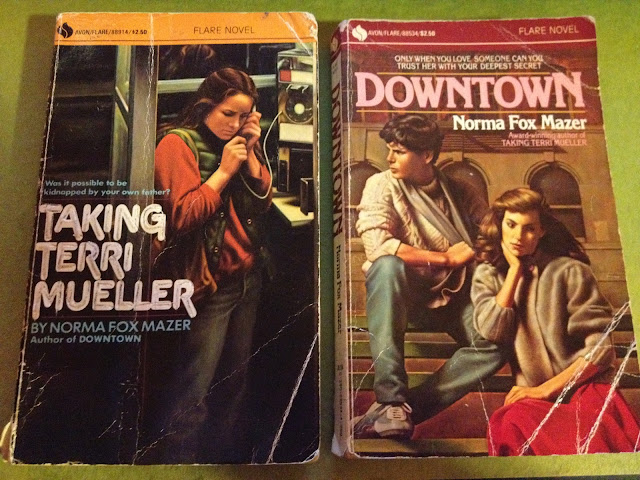I need to pay more attention to Bea and Mr. Jones. Lovely. My favorite switching places story is in Things That Sometimes Happen, by Avi, which you wrote about almost two years ago. You quote a fantastic description of working in an office.
I've been poking around our bookshelves here in Maine and have been reminded of one of my favorite author/illustrators, Peter Spier. He does wonderfully intricate drawings with lots to look for and always sneaks in some humor.
Bored -- Nothing to Do!, now sadly out of print, got a lot of readings in our house. The first picture is of two boys surrounded by toys and sports equipment looking very bored. Then their mother kicks them out of the house: "Go do something. I was never bored at your age!" While hanging out in the barn, they spot a large propeller on the wall, which leads them to books and plans about flight and before you know it --
they've built an airplane. They've scavenged materials from linen closets, baby carriages, fences and a VW bug. Text consists of two or three word captions on all the illustrations. The boys take a triumphal flight while their parents discover all the objects that are missing from the house, and then are buzzed by the aviators. Scoldings ensue. The last two panels are the parents saying to each other:
and the boys, back in a toy-filled room:"Some boys." "Clever, too!"
Bored - nothing to do!Spier's most spectacular book is probably
Noah's Ark, for which he won the 1978 Caldecott Medal. The almost-wordless book tells the Bible story starting with the building of the ark. Supplies for people and animals are piled outside, crowds of animals mill around while Noah and family admit pairs and shoo away the rest -- everyone from elephants to flies:
Pages of the lone ark in the rain alternate with pictures of the humans laboring: feeding many species, separating natural enemies, shoveling manure, catching fish, and (as the journey lengthens) admiring kittens, puppies, baby giraffes, chicks, many rabbits, and more.
Every page has lots to linger over:
It ends with most of the animals eagerly scattering across the slopes of Mt. Ararat -- the cats stick around, and the snails are quite slow.
This one can sustain many readings -- more lovely details to find every time.
It's late August -- time for Annie and Aunt to take a little time off, read a few more books, lie around in hammocks or see new places.
You have a lovely vacation, dear Annie. We'll be back and blogging in September.
Love,
Deborah









